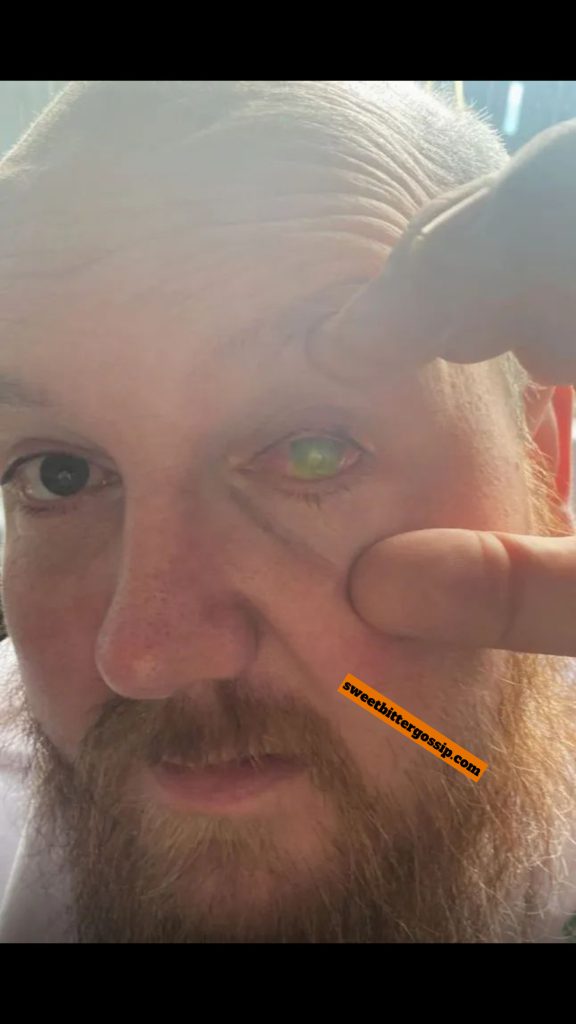A man who lost vision in one eye after a brutal acid attack has had his sight partially restored thanks to a donated placenta.
Paul Laskey, 43, was targeted with battery acid after confronting a mugger who had attacked his 16-year-old son. The horrific incident, which took place in Newcastle on February 5, 2023, caused his left eye to “melt” and left him fearing permanent blindness.

The plumber and heating engineer recalled the terrifying moment the corrosive liquid was squirted in his face. “I couldn’t see and couldn’t breathe. It took my breath away with how strong it was. I felt burning on my face,” he told Metro UK.
Despite the severity of his injuries, Paul initially felt little pain. “I wasn’t in a lot of pain because it had burnt through all the nerves,” he explained. However, the long-term consequences of the attack were devastating.
“It was horrendous. I was off work for the first six months. It was all that was on my mind. It was just awful,” Paul said. “I immediately worried that I would lose my sight completely, which would have upended my life. I was scared that I wouldn’t be able to work, drive, play football, or go to the cinema with my kids—things I love to do.”
Paul required intensive medical care, including two cornea transplants from donated eyes. However, a groundbreaking procedure using a donated placenta played a crucial role in stabilizing his vision.
Doctors used an amnion graft, a treatment derived from the inner lining of the placenta. This sticky, transparent membrane seals itself against the eye, helping to heal surface damage and cover exposed nerve endings. Paul underwent the procedure three times, with the first graft applied just a week after the attack. The treatment prevented his eyesight from deteriorating further and helped stabilize his injured eye.
Due to the success of the amnion grafts, doctors are now planning stem cell treatment to further restore vision in Paul’s left eye.
Professor Francisco Figueiredo, Consultant Ophthalmologist at Newcastle Eye Centre, Royal Victoria Infirmary, was one of the specialists who treated Paul. He emphasized the importance of the grafts in saving Paul’s sight.
“It is safe to say that these grafts have helped to save the vision Paul still has—and allowed us to move towards further treatment to restore his lost sight,” Professor Figueiredo stated.
He also highlighted the incredible role of organ donation in modern medicine. “It is incredible to think that this is possible due to the generosity of a mother, donating the organ that she has grown to help grow her child. It really is remarkable.”
Paul, who only recently learned that his sight-saving treatment came from a placenta, expressed deep gratitude for the donor.
“I’m so grateful that the amnion graft has helped to keep the sight that I do have and prepare my eye so that hopefully I can get my full range of vision back,” he said. “I’m so thankful to the mother who chose to donate her placenta to help people like me who are at risk of losing their sight completely. It’s incredible to know that a new life can help so many people in such a profound way, using something that’s usually thrown away.”
The placenta, an organ that forms in the womb to provide oxygen and nutrients to a developing fetus, is often discarded after childbirth. However, in recent years, medical advancements have found new uses for this organ, particularly in regenerative medicine.
Paul’s case highlights the life-changing potential of placenta donation. By using the amnion graft, doctors were able to halt further deterioration of his vision and set the stage for future treatments that could restore more of his sight.
His experience also raises awareness about the importance of organ and tissue donation. While many people are familiar with blood or organ donation, fewer realize that placental tissue can be repurposed to help individuals suffering from severe injuries or degenerative conditions.
As Paul continues his recovery, he remains hopeful that further procedures will improve his vision. “It’s amazing to think that something so small could make such a big difference in someone’s life,” he said. “I just hope more people become aware of how something that’s usually discarded can actually help transform lives.”
Paul’s journey is a testament to medical innovation, the generosity of donors, and the resilience of the human spirit.

